A Non-Intrusive Load Monitoring Model for Electric Vehicles Based on Multi-Kernel Conventional Neural Network
Abstract
:1. Introduction
- (1)
- In this paper, a NILM algorithm that can be applied for the monitoring of the charging behavior of electric vehicles at the substation level to support the high-proportion injection of distributed energy resources is proposed.
- (2)
- The multi-kernel CNN used in the NILM approach is designed by using three separate blocks with convolution kernels of different sizes that work in parallel to produce more precise disaggregation load data for electric vehicles.
- (3)
- The proposed NILM algorithm can be applied to the load disaggregation of EV loads and monitor the load consumption information from the substation level which contains a large number of electric power customers, frequent and complex switching events of electrical equipment, and high energy consumption.
2. Convolutional Neural Network
3. The Proposed NILM Algorithm
- (1)
- Step 1, the generation of self-organized datasets: To generate the self-organized datasets, first, the residual load data of different residential houses measured and recorded by Pecan Street datasets are combined and added to form the power sequences that contain the aggregate power consumption of an area and the power consumption of electrical vehicles. Then, the datasets are divided into training sets and testing sets.
- (2)
- Step 2, data processing: Remove noise and outliers in the raw dataset. Down-sample the self-organized datasets and segment using a sliding window method according to the fixed window length. Before segmenting the self-organized datasets using the sliding window approach with a fixed window length, the sampling rate is decreased to 0.5 Hz. Then, the processed training sets and testing sets are sent to the deep learning network.
- (3)
- Step 3, load disaggregation: The multi-kernel CNN is exploited to extract the load feature and calculate the power sequence of electric vehicles from the total load data. The input value of the network is total power consumption and the output value is the power sequence of electric vehicles.
4. Case Study
4.1. Data Pre-Processing
4.2. Data Separation
4.3. Loss Function
4.4. Evaluation Indicators
- True positive (TP): Both the result calculated by the algorithm and the ground truth value show the target appliance is in the “ON” state.
- False positive (FP): The result calculated by the algorithm shows the target appliance is in the “ON” state, while the ground truth value shows the target appliance is in the “OFF” state.
- True negative (TN): Both the result calculated by the algorithm and the ground truth value show the target appliance is in the “OFF” state.
- False negative (FN): The result calculated by the algorithm shows the target appliance is in the “OFF” state, while the ground truth value shows the target appliance is in the “ON” state.
4.5. Experiments and Results
5. Conclusions
Author Contributions
Funding
Institutional Review Board Statement
Informed Consent Statement
Data Availability Statement
Conflicts of Interest
References
- Zhang, Y.; Meng, X.; Shotorbani, A.M.; Wang, L. Minimization of AC-DC Grid Transmission Loss and DC Voltage Deviation Using Adaptive Droop Control and Improved AC-DC Power Flow Algorithm. IEEE Trans. Power Syst. 2021, 36, 744–756. [Google Scholar] [CrossRef]
- Bu, F.; Ma, Z.; Yuan, Y.; Wang, Z. WECC composite load model parameter identification using evolutionary deep reinforcement learning. IEEE Trans. Smart Grid 2020, 11, 5407–5417. [Google Scholar] [CrossRef]
- Anwar, M.B.; Muratori, M.; Jadun, P.; Hale, E.; Bush, B.; Denholm, P.; Ma, O.; Podkaminer, K. Assessing the value of electric vehicle managed charging: A review of methodologies and results. Energy Environ. Sci. 2022, 15, 466–498. [Google Scholar] [CrossRef]
- Holtsmark, B. A comparison of the global warming effects of wood fuels and fossil fuels taking albedo into account. Gcb Bioenergy 2015, 7, 984–997. [Google Scholar] [CrossRef]
- Sayed, M.A.; Atallah, R.; Assi, C.; Debbabi, M. Electric vehicle attack impact on power grid operation. Int. J. Electr. Power Energy Syst. 2022, 137, 107784. [Google Scholar] [CrossRef]
- Hu, Q.; Han, R.; Quan, X.; Wu, Z.; Tang, C.; Li, W.; Wang, W. Grid-Forming Inverter Enabled Virtual Power Plants with Inertia Support Capability. IEEE Trans. Smart Grid 2022, 13, 4134–4143. [Google Scholar] [CrossRef]
- Hu, Q.; Guo, Z.; Li, F. Imitation Learning Based Fast Power System Production Cost Minimization Simulation. IEEE Trans. Power Syst. 2023, 3237398. [Google Scholar] [CrossRef]
- Afzalan, M.; Jazizadeh, F. Residential loads flexibility potential for demand response using energy consumption patterns and user segments. Appl. Energy 2019, 254, 113693. [Google Scholar] [CrossRef]
- Yang, D.; Gao, X.; Kong, L.; Pang, Y.; Zhou, B. An event-driven convolutional neural architecture for non-intrusive load monitoring of residential appliance. IEEE Trans. Consum. Electron. 2020, 66, 173–182. [Google Scholar] [CrossRef]
- Zafar, U.; Bayhan, S.; Sanfilippo, A. Home energy management system concepts, configurations, and technologies for the smart grid. IEEE Access 2020, 8, 119271–119286. [Google Scholar] [CrossRef]
- Li, Y.; Hu, Q.; Li, N. A reliability-aware multi-armed bandit approach to learn and select users in demand response. Automatica 2020, 119, 109015. [Google Scholar] [CrossRef]
- Zhang, Y.; Wang, L.; Li, W. Autonomous DC Line Power Flow Regulation Using Adaptive Droop Control in HVDC Grid. IEEE Trans. Power Deliv. 2021, 36, 3550–3560. [Google Scholar] [CrossRef]
- Weng, T.; Balaji, B.; Dutta, S.; Gupta, R.; Agarwal, Y. Managing plug-loads for demand response within buildings. In Proceedings of the Third ACM Workshop on Embedded Sensing Systems for Energy-Efficiency in Buildings, Seattle, WA, USA, 1 November 2011; pp. 13–18. [Google Scholar]
- Zhang, Y.; Shotorbani, A.M.; Wang, L.; Li, W. Distributed Voltage Regulation and Automatic Power Sharing in Multi-Terminal HVDC Grids. IEEE Trans. Power Syst. 2020, 35, 3739–3752. [Google Scholar] [CrossRef]
- Revuelta Herrero, J.; Lozano Murciego, Á.; López Barriuso, A.; Hernández de la Iglesia, D.; Villarrubia González, G.; Corchado Rodríguez, J.M.; Carreira, R. Non intrusive load monitoring (nilm): A state of the art. In Proceedings of the International Conference on Practical Applications of Agents and Multi-Agent Systems, Porto, Portugal, 21–23 June 2017; pp. 125–138. [Google Scholar]
- Hu, Q.; Liang, Y.; Ding, H.; Quan, X.; Wang, Q.; Bai, L. Topological partition based multi-energy flow calculation method for complex integrated energy systems. Energy 2022, 244, 123152. [Google Scholar] [CrossRef]
- Zheng, Z.; Sun, Z.; Pan, J.; Luo, X. An integrated smart home energy management model based on a pyramid taxonomy for residential houses with photovoltaic-battery systems. Appl. Energy 2021, 298, 117159. [Google Scholar] [CrossRef]
- Huber, P.; Calatroni, A.; Rumsch, A.; Paice, A. Review on deep neural networks applied to low-frequency nilm. Energies 2021, 14, 2390. [Google Scholar] [CrossRef]
- Hamid, O.; Barbarosou, M.; Papageorgas, P.; Prekas, K.; Salame, C. Automatic recognition of electric loads analyzing the characteristic parameters of the consumed electric power through a Non-Intrusive Monitoring methodology. Energy Procedia 2017, 119, 742–751. [Google Scholar] [CrossRef]
- Liu, B.; Luan, W.; Yu, Y. Dynamic time warping based non-intrusive load transient identification. Appl. Energy 2017, 195, 634–645. [Google Scholar] [CrossRef]
- Hart, G.W. Nonintrusive appliance load monitoring. Proc. IEEE 1992, 80, 1870–1891. [Google Scholar] [CrossRef]
- Pei, C.; Huiying, W.; Bin, Y.; Chuangxin, G.; Hengjun, Z. Research on smart demand side management system in low-carbon economy. Power Syst. Technol. 2012, 36, 11–16. [Google Scholar]
- Bonfigli, R.; Principi, E.; Fagiani, M.; Severini, M.; Squartini, S.; Piazza, F. Non-intrusive load monitoring by using active and reactive power in additive Factorial Hidden Markov Models. Appl. Energy 2017, 208, 1590–1607. [Google Scholar] [CrossRef]
- Kang, H.; Kim, H. Household appliance classification using lower odd-numbered harmonics and the bagging decision tree. IEEE Access 2020, 8, 55937–55952. [Google Scholar]
- Zoha, A.; Gluhak, A.; Nati, M.; Imran, M.A. Low-power appliance monitoring using factorial hidden markov models. In Proceedings of the 2013 IEEE Eighth International Conference on Intelligent Sensors, Sensor Networks and Information Processing, Melbourne, Australia, 2–5 April 2013; pp. 527–532. [Google Scholar]
- Kolter, J.Z.; Jaakkola, T. Approximate inference in additive factorial hmms with application to energy disaggregation. In Proceedings of the Artificial Intelligence and Statistics, La Palma, Canary Islands, Spain, 21–23 April 2012; pp. 1472–1482. [Google Scholar]
- Song, X.; Zhou, M.; Tu, J.; Li, G. Non-intrusive load monitoring method based on k-NN and kernel Fisher discriminant. Autom. Electr. Power Syst. 2018, 42, 73–80. [Google Scholar]
- Zhang, Y.; Shotorbani, A.M.; Wang, L.; Li, W. A Combined Hierarchical and Autonomous DC Grid Control for Proportional Power Sharing with Minimized Voltage Variation and Transmission Loss. IEEE Trans. Power Deliv. 2022, 37, 3213–3224. [Google Scholar] [CrossRef]
- Athanasiadis, C.; Doukas, D.; Papadopoulos, T.; Chrysopoulos, A. A scalable real-time non-intrusive load monitoring system for the estimation of household appliance power consumption. Energies 2021, 14, 767. [Google Scholar] [CrossRef]
- Fagiani, M.; Bonfigli, R.; Principi, E.; Squartini, S.; Mandolini, L. A non-intrusive load monitoring algorithm based on non-uniform sampling of power data and deep neural networks. Energies 2019, 12, 1371. [Google Scholar] [CrossRef]
- Chen, T.; Zhang, B.; Pourbabak, H.; Kavousi-Fard, A.; Su, W. Optimal Routing and Charging of an Electric Vehicle Fleet for High-Efficiency Dynamic Transit Systems. IEEE Trans. Smart Grid 2018, 9, 3563–3572. [Google Scholar] [CrossRef]
- Zhang, Y.; Shotorbani, A.M.; Wang, L.; Mohammadi-Ivatloo, B. Distributed secondary control of a micro grid with a generalized PI finite-time controller. IEEE Open Access J. Power Energy 2021, 8, 57–67. [Google Scholar] [CrossRef]
- Kelly, J.; Knottenbelt, W. Neural nilm: Deep neural networks applied to energy disaggregation. In Proceedings of the 2nd ACM International Conference on Embedded Systems for Energy-Efficient Built Environments, Seoul, Republic of Korea, 4–5 November 2015; pp. 55–64. [Google Scholar]
- Zhang, C.; Zhong, M.; Wang, Z.; Goddard, N.; Sutton, C. Sequence-to-point learning with neural networks for non-intrusive load monitoring. In Proceedings of the AAAI Conference on Artificial Intelligence, New Orleans, LA, USA, 2–7 February 2018. [Google Scholar]
- Hu, Q.; Li, F.; Chen, C.-f. A Smart Home Test Bed for Undergraduate Education to Bridge the Curriculum Gap from Traditional Power Systems to Modernized Smart Grids. IEEE Trans. Educ. 2015, 58, 32–38. [Google Scholar] [CrossRef]
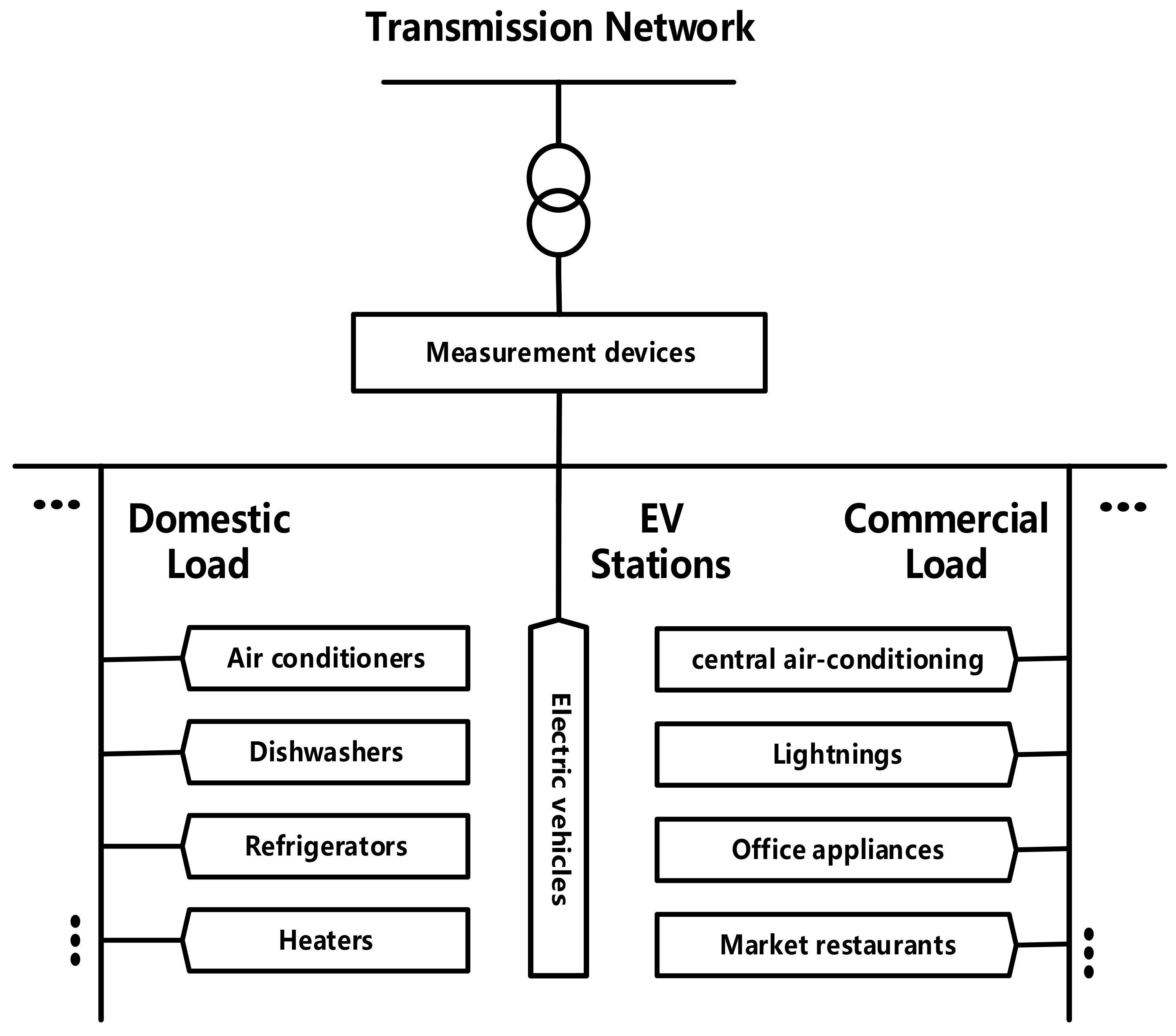
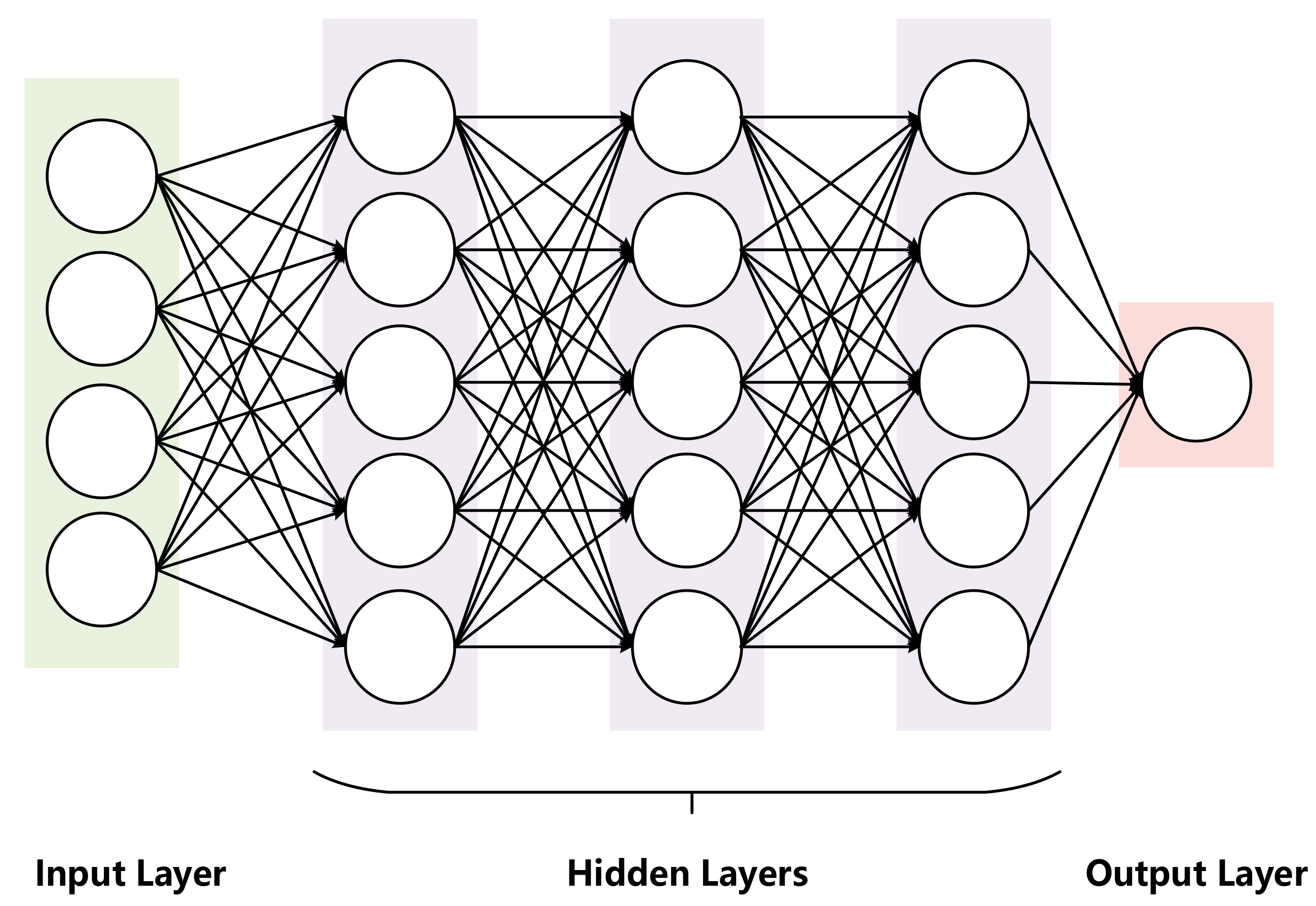

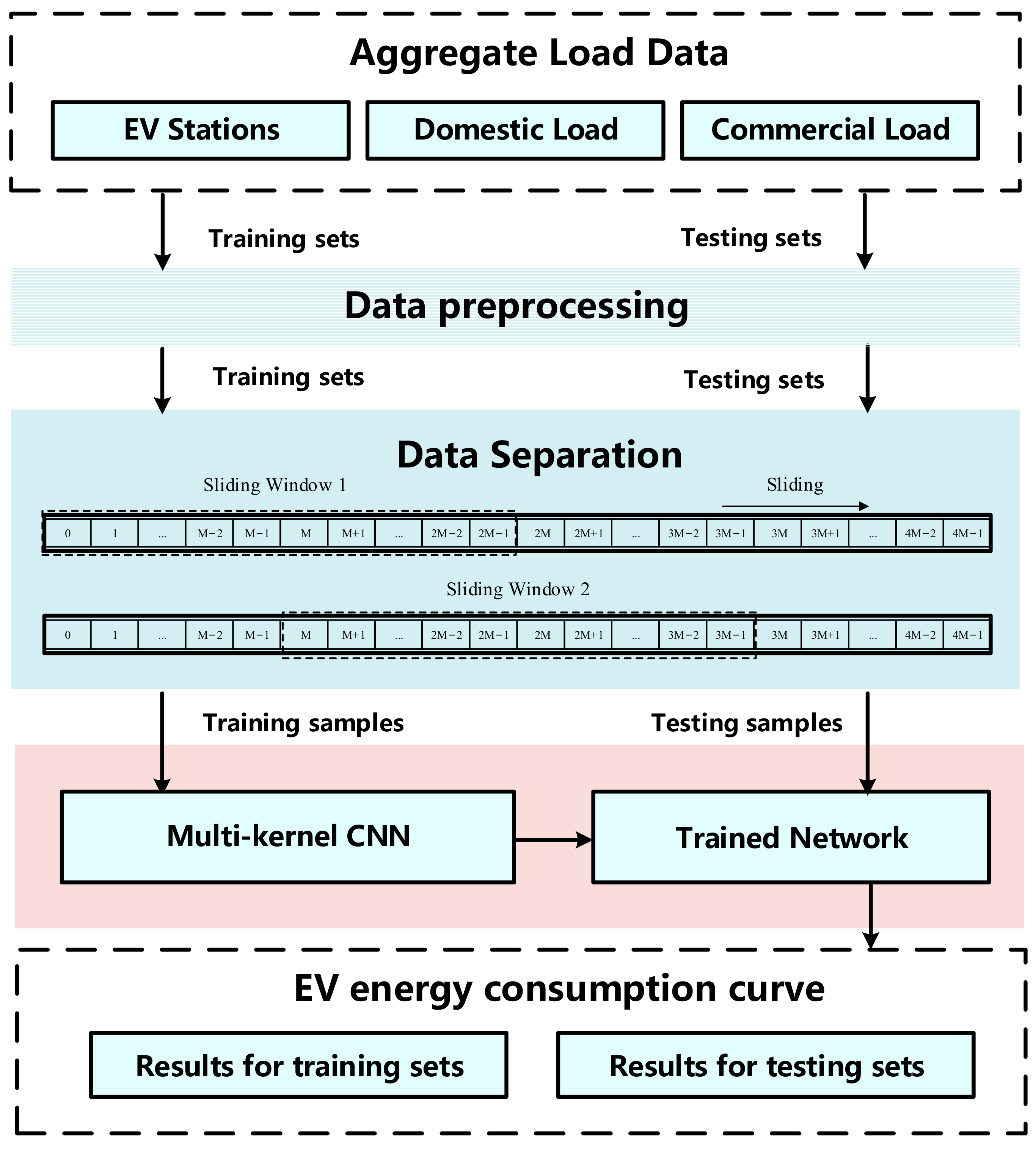
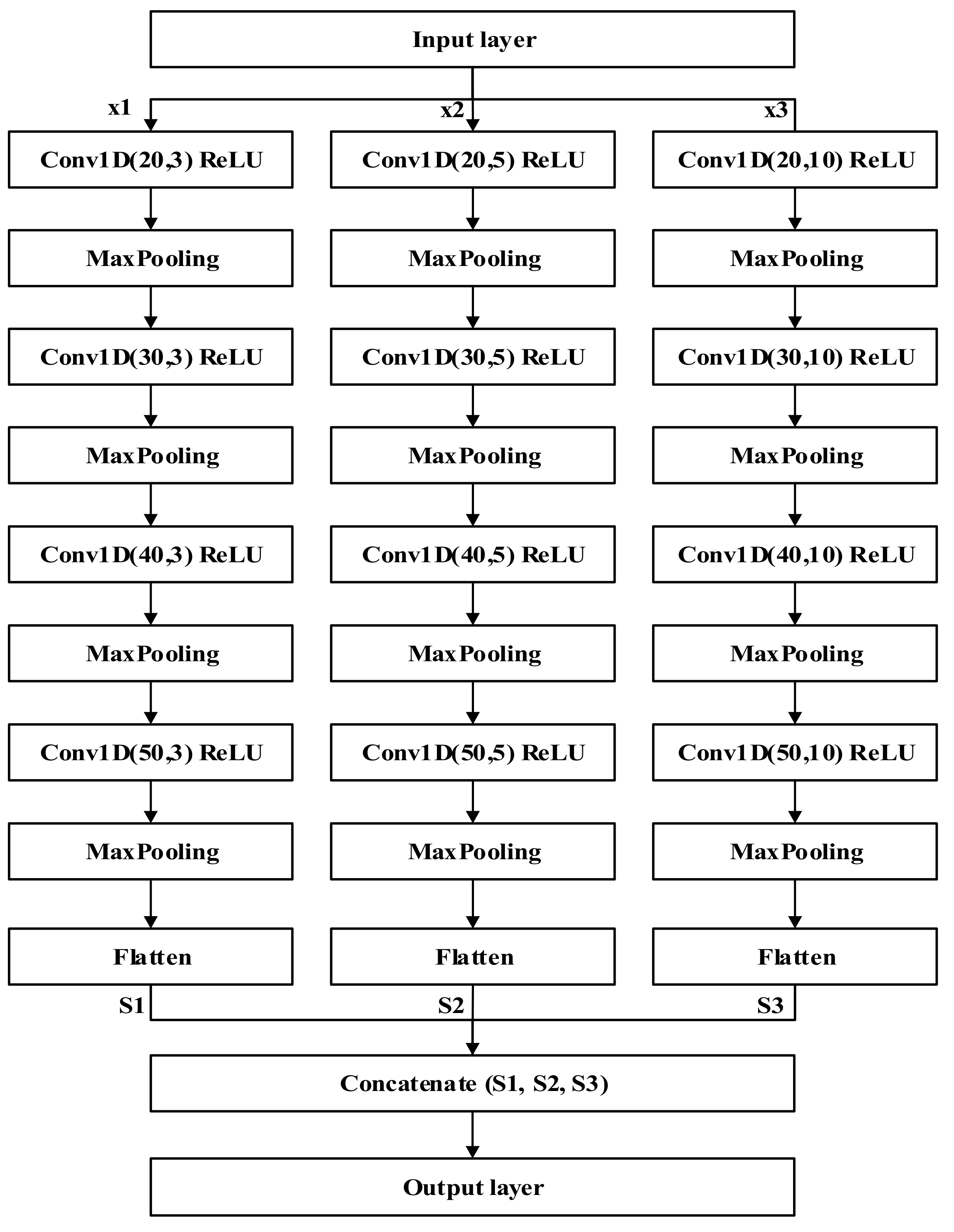

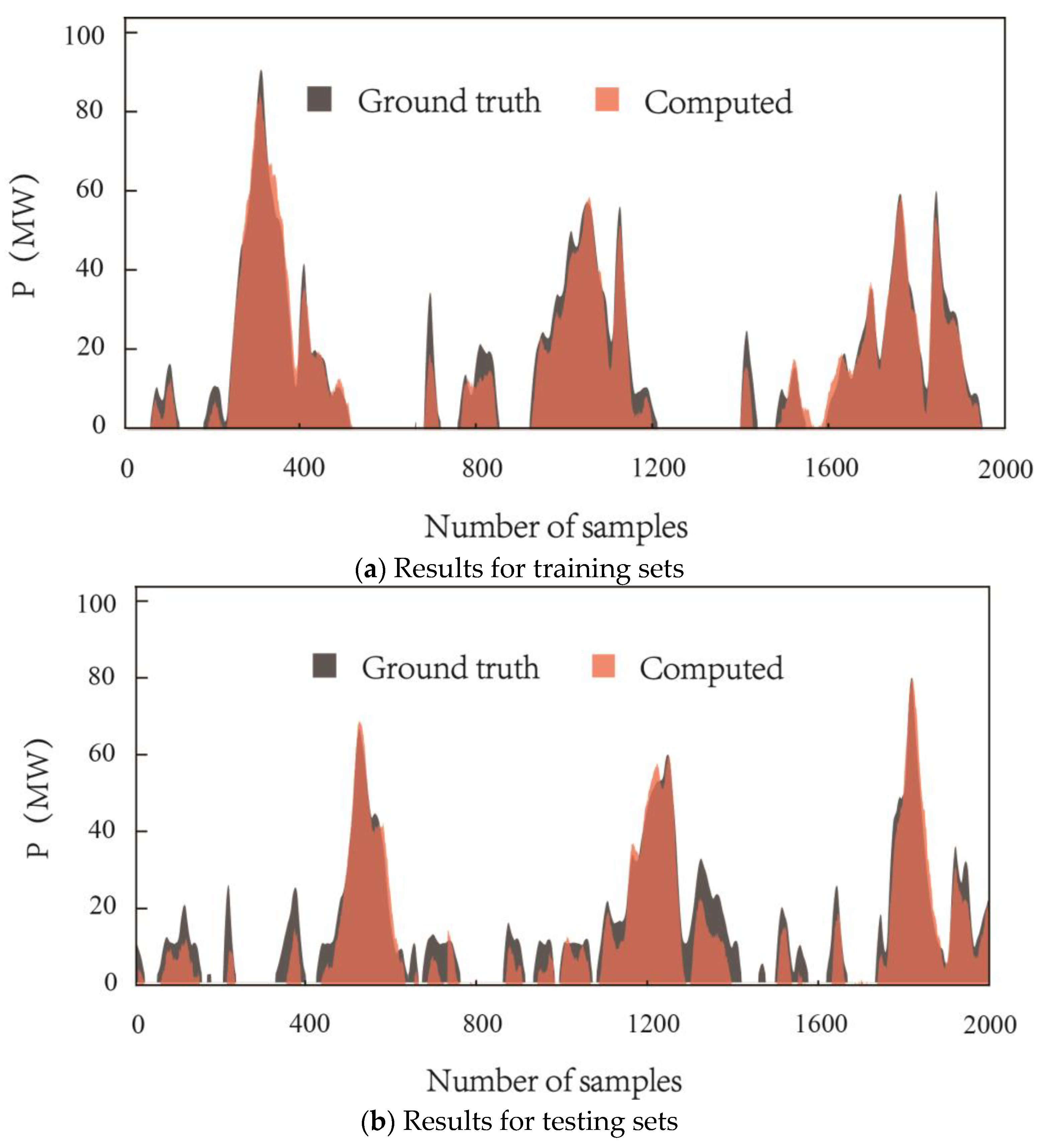
| Evaluation Metrics | Training Sets | Testing Sets |
|---|---|---|
| 0.9794 | 0.9983 | |
| 0.9078 | 0.8292 | |
| 0.9341 | 0.8706 | |
| 0.9422 | 0.9059 | |
| 2.6717 | 4.1587 |
Disclaimer/Publisher’s Note: The statements, opinions and data contained in all publications are solely those of the individual author(s) and contributor(s) and not of MDPI and/or the editor(s). MDPI and/or the editor(s) disclaim responsibility for any injury to people or property resulting from any ideas, methods, instructions or products referred to in the content. |
© 2023 by the authors. Licensee MDPI, Basel, Switzerland. This article is an open access article distributed under the terms and conditions of the Creative Commons Attribution (CC BY) license (https://creativecommons.org/licenses/by/4.0/).
Share and Cite
Yin, Y.; Xu, B.; Zhong, Y.; Bao, T.; Wang, P. A Non-Intrusive Load Monitoring Model for Electric Vehicles Based on Multi-Kernel Conventional Neural Network. World Electr. Veh. J. 2023, 14, 51. https://doi.org/10.3390/wevj14020051
Yin Y, Xu B, Zhong Y, Bao T, Wang P. A Non-Intrusive Load Monitoring Model for Electric Vehicles Based on Multi-Kernel Conventional Neural Network. World Electric Vehicle Journal. 2023; 14(2):51. https://doi.org/10.3390/wevj14020051
Chicago/Turabian StyleYin, Yanhe, Baojun Xu, Yi Zhong, Tao Bao, and Pengyu Wang. 2023. "A Non-Intrusive Load Monitoring Model for Electric Vehicles Based on Multi-Kernel Conventional Neural Network" World Electric Vehicle Journal 14, no. 2: 51. https://doi.org/10.3390/wevj14020051
APA StyleYin, Y., Xu, B., Zhong, Y., Bao, T., & Wang, P. (2023). A Non-Intrusive Load Monitoring Model for Electric Vehicles Based on Multi-Kernel Conventional Neural Network. World Electric Vehicle Journal, 14(2), 51. https://doi.org/10.3390/wevj14020051








